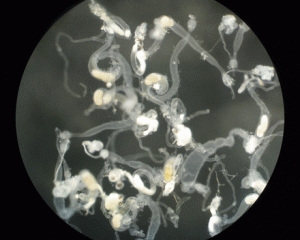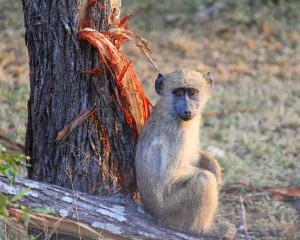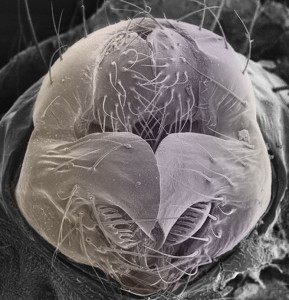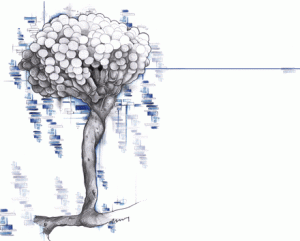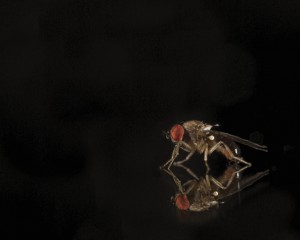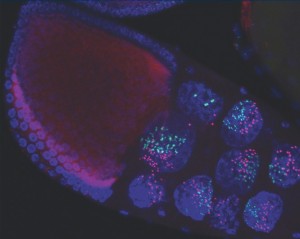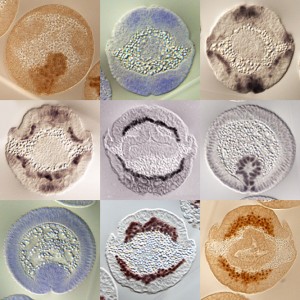Enter your address to receive notifications about new posts to your email.
Articles by Editorial Staff (435 results)
-
New in G3: peanuts, peas, & dates
Check out the July issue of G3! INVESTIGATIONS Multiple Conserved Heteroplasmic Sites in tRNA Genes in the Mitochondrial Genomes of Terrestrial Isopods (Oniscidea) Christopher H. Chandler, Myriam Badawi, Bouziane Moumen, Pierre Grève, and Richard Cordaux G3 July 2015 5:1317-1322; Early Online April 24, 2015, doi:10.1534/g3.115.018283 Abstract | Full Text | Full Text (PDF) | Supporting…
-
July GENETICS Highlights
The July issue of GENETICS is out now! Check out the Highlights below of the full Table of Contents here. And don’t miss the essays by winners of 2015 GSA Honors and Awards! ISSUE HIGHLIGHTS Fine mapping causal variants with an approximate Bayesian method using marginal test statistics, pp. 719–736 Wenan Chen, Beth R.…
-
June GENETICS Highlights
The June issue of GENETICS is out now! Check out the Highlights below or the full Table of Contents here. ISSUE HIGHLIGHTS Cortical folding of the primate brain: an interdisciplinary examination of the genetic architecture, modularity, and evolvability of a significant neurological trait in pedigreed baboons (Genus Papio), pp. 651–665 Elizabeth G. Atkinson, Jeffrey Rogers,…
-
New in G3: Mosquitoes, cotton, & CYCLoPs
Check out the June issue of G3! MEETING REPORT Meeting Report on Experimental Approaches to Evolution and Ecology Using Yeast and Other Model Systems Audrey P. Gasch and Gaël Yvert G3 June 2015 5:1021-1023; Early Online April 22, 2015, doi:10.1534/g3.115.018614 Full Text | Full Text (PDF) INVESTIGATIONS Analysis of RNA Interference Lines Identifies New Functions…
-
New in G3: C. elegans quantitative genetics, mouse imprinting, and undergraduate genomics research
Check out the May issue of G3! Investigations A Novel Electronic Assessment Strategy to Support Applied Drosophila Genetics Training in University Courses Maggy Fostier, Sanjai Patel, Samantha Clarke, and Andreas Prokop G3 May 2015 5:689-698; Early Online February 25, 2015, doi:10.1534/g3.115.017509 Abstract | Full Text | Full Text (PDF) | Supporting Information Differential Regulation of…
-
May GENETICS Highlights
The May issue of GENETICS is out now! Check out the highlights below or the full Table of Contents here. Efficient multiple-trait association and estimation of genetic correlation using the matrix-variate linear mixed model, pp. 59–68 Nicholas A. Furlotte and Eleazar Eskin Existing approaches to multiple-trait association mapping are computationally intractable for large sample sizes, limiting their…
-
April GENETICS Highlights
The April issue of GENETICS is out now! Check out the highlights below of the full Table of Contents here. Nascent transcription affected by RNA polymerase IV in Zea mays, pp. 1107–1125 Karl F. Erhard Jr., Joy-El R. B. Talbot, Natalie C. Deans, Allison E. McClish, and Jay B. Hollick RNA polymerase IV (Pol IV) is required…
-
New in G3: Genomic selection, ortholog detection, and Drosophila lines with global diversity
Check out the April issue of G3! Investigations A Bayesian Model for the Analysis of Transgenerational Epigenetic Variation Luis Varona, Sebastián Munilla, Elena Flavia Mouresan, Aldemar González-Rodríguez, Carlos Moreno, and Juan Altarriba G3 April 2015 5:477-485; Early Online January 23, 2015, doi:10.1534/g3.115.016725 Abstract | Full Text | Full Text (PDF) | Supporting Information Identification of…
-
March GENETICS Highlights
The March issue of GENETICS is out now! Check out the highlights below of the full Table of Contents here. Locally epistatic genomic relationship matrices for genomic association and prediction, pp. 857–871 Deniz Akdemir and Jean-Luc Jannink In breeding studies a distinction is made between the genetic value (additive + epistatic genetic effects) and…
-
New in G3: Fruit fly CatWalk, well fed Drosophila, and house fly sex determination
Just in time for the 2015 GSA Drosophila Research Conference, the new issue of G3 features FlyCatWalk for sorting live Drosophila based on morphometric traits, a Drosophila genome-wide association study for nutritional indices, and autosomal versus y-linked male determination in house flies. Check out the Table of Contents below! Investigations The FlyCatwalk: A High-Throughput…
-
New in G3: Malaria, scoliosis, and a Mexican tetra map
The new issue of G3 features Asian malarial mosquito control, familial idiopathic scoliosis, and a high-res genetic map for the Mexican tetra. Check out the Table of Contents below! Investigations Maternal Germline-Specific Genes in the Asian Malaria Mosquito Anopheles stephensi: Characterization and Application for Disease Control James K. Biedler, Yumin Qi, David Pledger, Anthony A.…

